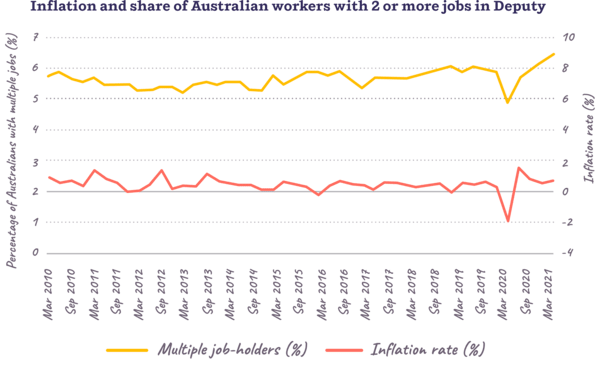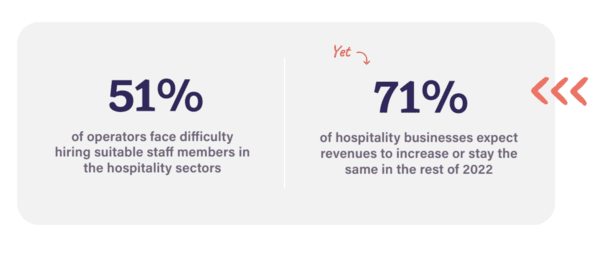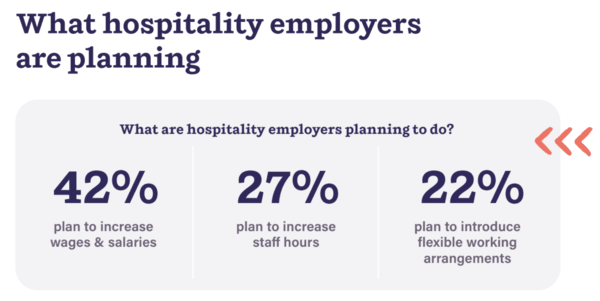Prior to the pandemic, the hospitality business routinely employed immigrants to fill occupation openings. Hospitality enterprises are having difficulties to meet labour demands due to the fact many employees have been compelled to return household when the gates closed, and there is a substantial backlog in visa processing.
In truth, according to Australian Bureau of Statistics information, 51 per cent of resort companies report trouble recruiting suited personnel.
A new report from the leading shift operate platform, Deputy, The Large Change: The Changing Landscape of Australian Hospitality, reveals insights into how the hospitality field is coping additional than two a long time after the pandemic commenced, amid common labour shortages and source chain disruptions.

Change staff performing several work opportunities and extended hrs
Quite a few people today have taken up jobs across various hospitality corporations as labour shortages plague the sector. In the Deputy system, the proportion of change personnel who labored various work opportunities in the hospitality field peaked in July 2022 at just below 3 per cent. In addition, shift staff are doing the job higher several hours than they did on normal in advance of the pandemic or through high holiday and searching seasons (these as Christmas), when shift workers’ several hours generally peak.
In accordance to Shashi Karunanethy, an impartial labour economist, this can be attributed to the casualisation of perform and amplified career prospects in the gig economic climate. At the identical time, numerous personnel may perhaps be compelled to expand their share of change perform in buy to retain up with growing residing expenses, with the proportion of change workers functioning various employment climbing in lockstep with inflation fees.
Important states toughest hit by labour shortages

In accordance to the details, this is especially obvious in large parts like Victoria and New South Wales, in which employers are rostering 30 per cent less change get the job done hours than prior to the outbreak. Karunanethy explains this to the presence of huge cities such as Sydney and Melbourne, which are hubs for training and business and hence bring in more intercontinental pupils and abroad personnel who function in hospitality.
States that rely fewer on these folks, these kinds of as Western Australia, have experienced the quickest rebound. Nonetheless, these nations are not immune to labour shortages and continue on to roster 10 for each cent much less shift work hrs than ahead of the outbreak.
Recovery across distinct hospitality enterprises
Lodging and sit-down restaurants experienced the greatest career gains and recoveries through 2022, with shift perform hrs raising by 50 per cent and 30 per cent, respectively, in comparison to pre-pandemic ranges. Given that several Australians have averted abroad travel, Karunanethy suggests they are turning to staycations and dining encounters to meet up with their experiential requires. On the other hand, bars and quickly food items retailers go on to wrestle with labour shortages.
To current, bars carry on to employ 20 for every cent much less shift personnel than just before the pandemic. With growing price pressures from foodstuff and alcohol suppliers and problems going to new earnings potential in takeaway and shipping and delivery providers, the sector is encountering a slew of difficulties.

Although food stuff establishments are scheduling 40% fewer several hours than before the pandemic, this is primarily due to the industry’s adoption of foodstuff shipping versions and labour-changing technologies, resulting in fewer whole shift get the job done hrs.
Victorian fast food stuff retailers confirmed the best decrease in change perform hrs of any condition. Client paying behaviours in the push-via and in-app delivery buys have now turn out to be preserved behavior in the state that have been subjected to the most continue to be-at-property rules.
A important barrier for ladies employees
The centrepiece reform to enhance women’s labour sector participation is common daycare, with just one in four possible staff citing childcare as the principal barrier to employment. As Infant Boomers and Generation X also consider on childcare obligations, childcare policy will also impact older employees’ capacity to enter labour.
In the total sector, girls now make up 48 for each cent of change perform hrs, up from 47 for every cent in 2020. Due to the fact girls now work the bulk of shift operate several hours, cafes and coffee shops had the most significant progress for feminine shift workforce (4 for each cent).
For much more data and added results, obtain the full report right here.
Check out: Deputy.
Preserve up to date with our tales on LinkedIn, Twitter, Fb and Instagram.





